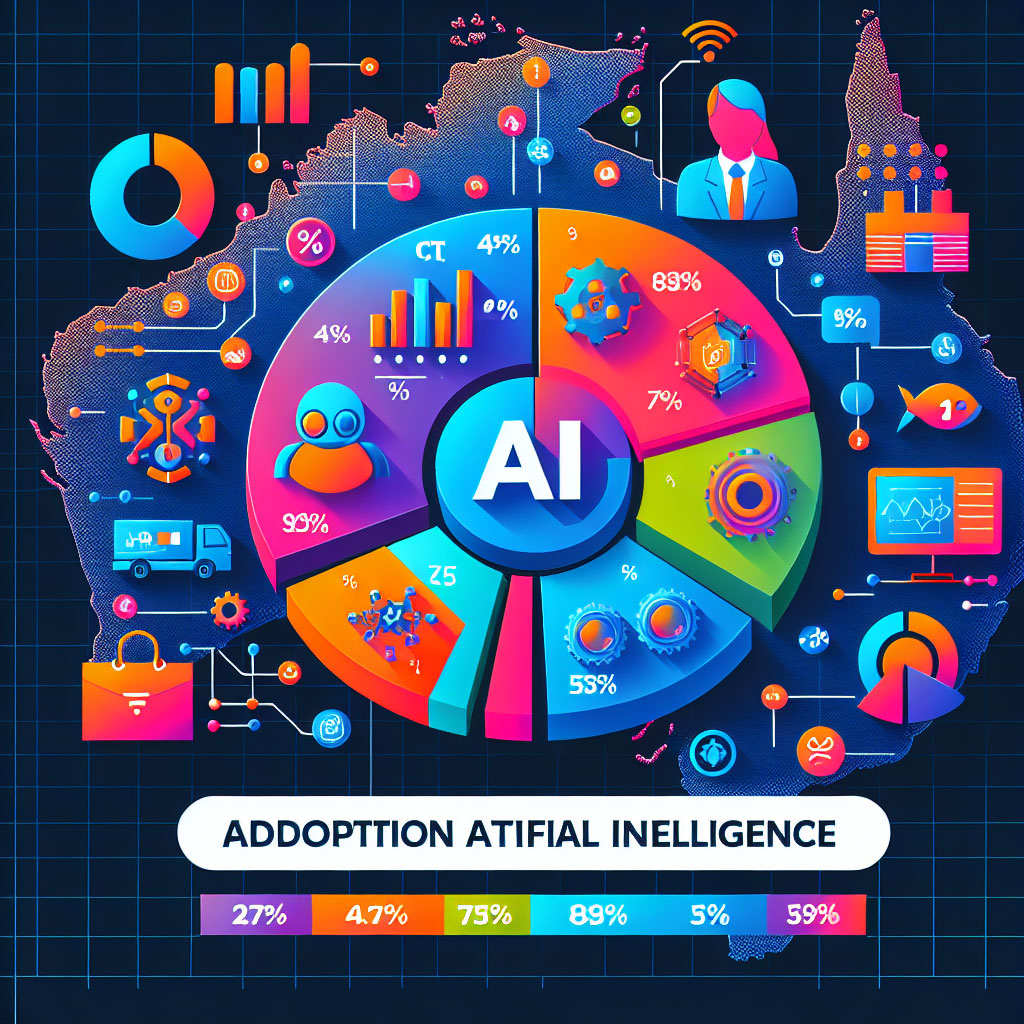
The integration of artificial intelligence into the operations of small and medium enterprises (SMEs) in Australia continues to gain momentum, as evidenced by the latest findings from the AI Adoption Tracker.
The National AI Centre (NAIC) is closely observing the ways in which SMEs utilise and perceive AI technology. The objective is to gain insights into the patterns of AI adoption among these businesses, as well as the associated opportunities, challenges, and the value AI can add to their operations.
To facilitate this process, we have developed the AI Adoption Tracker, a resource designed for organisations collaborating with SMEs to promote a responsible AI journey.
Features of the tracker include interactive dashboards that cover:
- AI adoption rates segmented by business size, industry, and geographical location
- Awareness and utilisation of various AI applications
- Perceived business outcomes, advantages, and challenges.
In partnership with Fifth Quadrant, we are conducting ongoing research involving monthly surveys of 400 businesses. Our data collection commenced in May 2024, with updates scheduled monthly, complemented by quarterly insights summarising significant findings.
Key Findings for October to December 2024
AI Adoption Statistics
Recent data indicates a favourable trend in the adoption of AI among Australian SMEs. Currently, 40% of these enterprises have embraced AI, representing a 5% increase from the previous quarter (July – September 2024). Concurrently, awareness of AI usage has improved, with a 2% decrease in the number of businesses unfamiliar with its applications, now standing at 21%. Notably, small businesses with four or fewer employees exhibited a considerable rise in adoption, increasing from 25% to 34%.
Furthermore, the percentage of SMEs that do not plan to implement AI within the next year has decreased by 4%, dropping to 38%. A majority of businesses acknowledge the potential of AI to provide a competitive edge and to transform operational capabilities.
Nonetheless, hurdles such as skills shortages, funding limitations, and the rapid pace of technological advancements continue to pose challenges for AI adoption. Encouragingly, SMEs are becoming increasingly adept at navigating regulatory, compliance, and governance issues associated with AI. Nevertheless, there is a pressing need for enhancements in cybersecurity preparedness and the responsible deployment of AI technologies.
AI Adoption Across Industries
AI adoption rates demonstrate considerable diversity across various sectors. The sectors experiencing significant growth in AI integration include:
- Retail trade, which increased by 8% to reach 45%
- Construction, up by 8% to 34%
- Agriculture, forestry, and fishing, rising by 21% to 32%
Conversely, industries such as health and education, hospitality, and manufacturing reported a decline in adoption rates.
AI Adoption by State and Territory
The adoption of AI fluctuated significantly across different states over the past quarter. Notable changes include:
- New South Wales experiencing growth from 26% to 28%, indicating steady progress in AI integration.
- Victoria maintaining a consistent rate of 27% with no variation from the previous quarter.
- Queensland showing marked enthusiasm, rising from 22% to 29%.
- Western Australia also increasing from 21% to 29%.
- Tasmania rising from 6% to 11%.
These shifts highlight the disparate levels of AI adoption and the growing awareness of its potential across the states.
There remains a stark contrast in AI adoption between metropolitan and regional areas, with metropolitan regions exhibiting higher adoption rates. This discrepancy suggests opportunities for further investigation to understand the factors influencing adoption in regional areas, with current statistics reflecting:
- 34% in metro areas of NSW compared to 18% in regional areas
- 32% in metro areas of WA compared to 11% in regional areas.
AI Applications in Use
The leading five AI applications preferred by businesses remain consistent with the previous quarter, with generative AI assistants now occupying the top position:
- Generative AI assistants
- Data entry and document processing
- Fraud detection
- Marketing automation
- Customer support and chatbots
Businesses intending to adopt AI are prioritising:
- Data entry and document processing
- Fraud detection.
Certain industry sectors display enhanced adoption for specific AI applications, with services, hospitality, distribution, and retail trade leading in the use of generative AI assistants, while retail, trade, and hospitality excel in marketing automation.
Perceived Business Outcomes
There has been an increase in the number of SMEs recognising the potential of AI to drive business results compared to the previous quarter. The top three outcomes that businesses firmly believe AI can facilitate include:
- Faster access to accurate data for informed decision-making: 22%
- Enhanced customer experience and engagement: 18%
- Improved security, data protection, and fraud detection: 18%
However, a significant number of businesses remain sceptical regarding AI’s ability to deliver specific outcomes, particularly in areas such as:
- Improvements in employee experience and engagement: 43%
- Increases in revenue and cash flow: 42%.
This comprehensive snapshot of AI adoption in Australia in late 2024 underscores both advancements and enduring challenges faced by the SME sector in integrating AI technologies.

